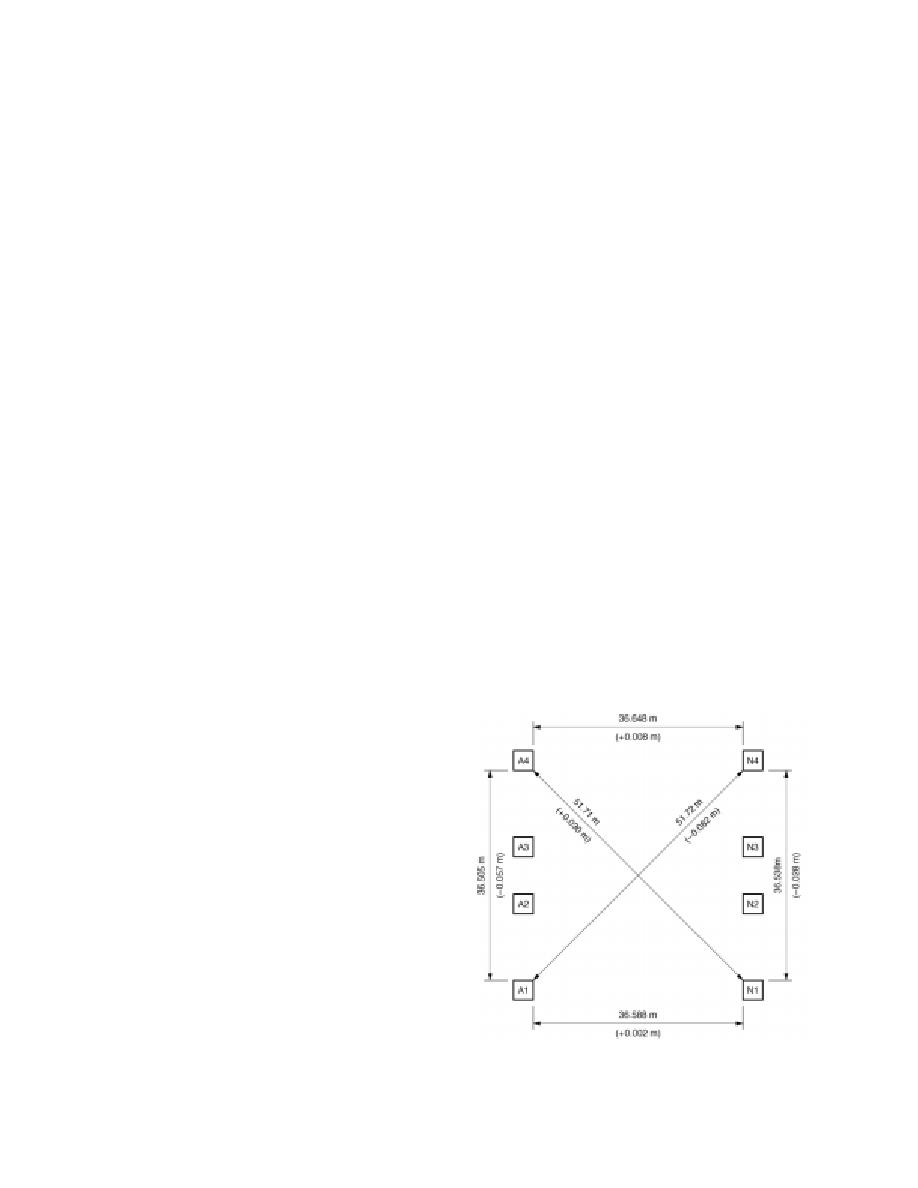
causing the structure to become skewed. Al-
larities can occur beneath different columns. A
though tilt measurements had only been taken
column that settles more rapidly on its snow
foundation will not support as much load as the
on a regular basis since 1986, the data showed a
adjoining columns, which then must assume a
disturbing trend: the columns were leaning at a
portion of the sunken column's load. Continued
rate that increased the out-of-plumbness by
settlement will result in structural tilting and a
about 7 cm per year over a 29-m length. The col-
redistribution of stresses. This results in increased
umn tilts affected the stresses experienced by the
stresses in the structure because of uneven load-
supporting structure in two ways. Axial loads no
ing and tilting.
longer acted along the central axis of the col-
The problems associated with differential set-
umns, thereby generating moment loads at the
tlement were partially compensated for through-
base of the column where it attaches to the foot-
out the station's life by performing structural
ing structure. Thus the angle between column and
maintenance operations called "mini-lifts,"
footing tilted. In addition, horizontal stresses
wherein the building is jacked (with the trusses
are introduced at the truss connections (sway
attached) just enough to relevel the building and
bolt locations) because of twisting forces on
trusses. This redistributes the loads and thus en-
trusses. These were the static structural forces
ables the columns to assume a more equal load
that were measured to determine the column
distribution, but does not address the underly-
stresses.
ing problem of differential footing settlements.
Finally, as the footings settle and the ice cap
Thus, although building distortion and truss
drifts (App. A), the columns move differentially
stress problems at the site were addressed, differ-
with respect to each other (Fig. 10). This differen-
ential settlement continued to plague DYE-2 after
tial movement, in addition to the column out-of-
the 1982 move.
plumbness mentioned above, sets up horizontal
Two forms of tilting will occur during settle-
distortions in the columntruss system that can
ment: footing and column tilt. According to a
result in high loads at restraining points at the
computerized structural analysis done by Met-
collars and in the building. High bending
calf & Eddy Engineers, Inc. (1987), footing tilt
moments at the column bases are a result of these
can induce large stresses into the structural
large horizontal loads. The horizontal distortion
frame. Some of these stresses, caused by column
of the truss system may also be the reason why
out-of-plumbness and the resulting high
pinching and spreading loads sometimes appeared
moments, can exceed the critical value for yield-
during sway bolt measurements (described in
ing at the column bases. Modifications made in
conjunction with the sideways move in 1982 per-
mit some compensation for footing tilt through
the use of shims, which can be inserted at the
four bearing blocks at the base where each col-
umn bears on its footing (Fig. 9). Again, this was
compensating for the effects of the problem, not
addressing it, although the reduction in stress
due to shimming did enhance the structural in-
tegrity of the system over a short period of time.
A more serious phenomenon associated with
differential settlement is column tilt. Column
tilts are caused by the structural system leaning
in one direction, as opposed to plumbness diffi-
culties caused by individual footing tilts. How-
ever, footing tilts can exacerbate column tilts and
vice versa, so the system as a whole can act as an
open-loop feedback system. When the building
was moved and raised in 19821983, the columns
were not plumbed. This omission haunted DYE-
2 until abandonment in 1988. Unlike DYE-3,
where column tilts were not uniform, at DYE-2
Figure 10. Horizontal movement of columns at snow
the columns all tilted in one general direction,
surface.
5



 Previous Page
Previous Page
